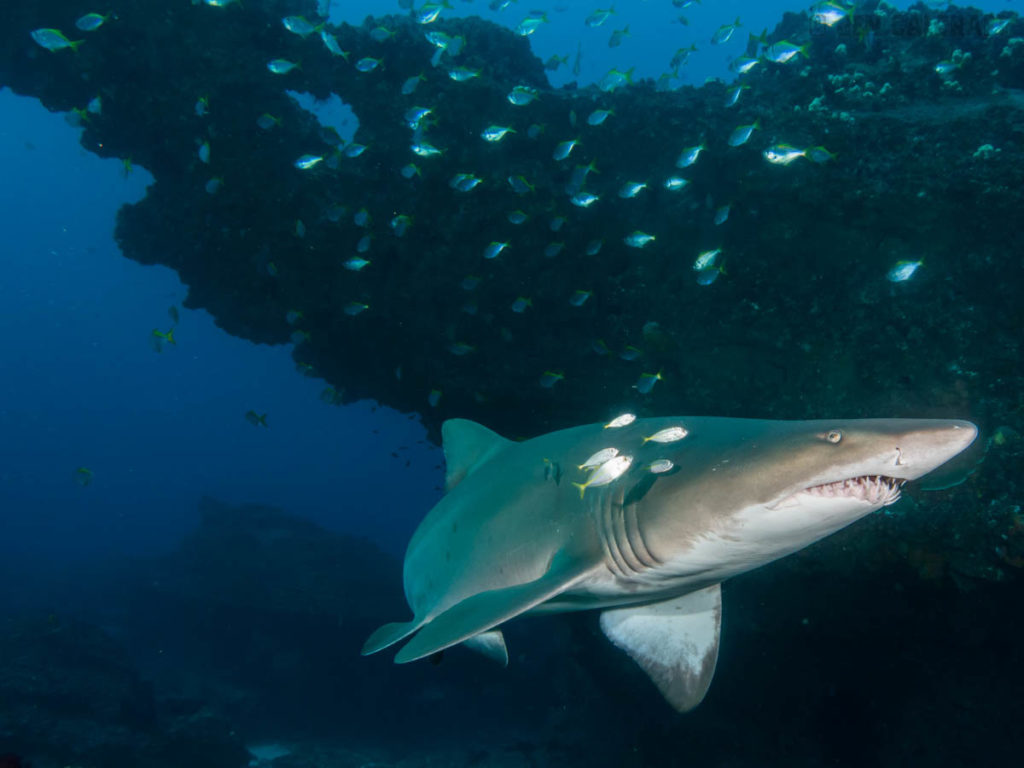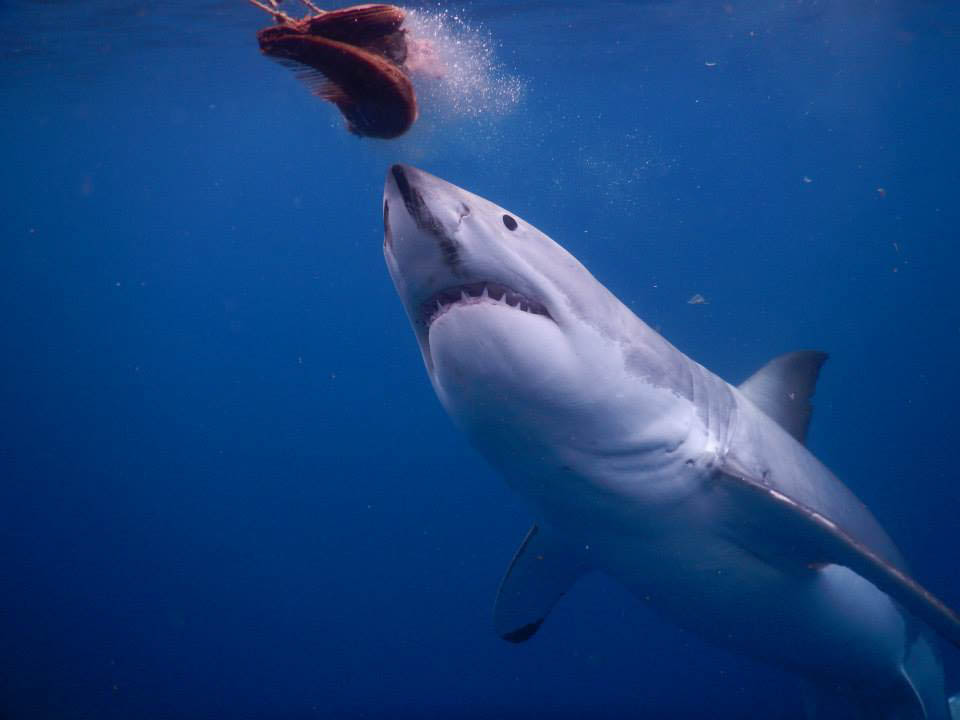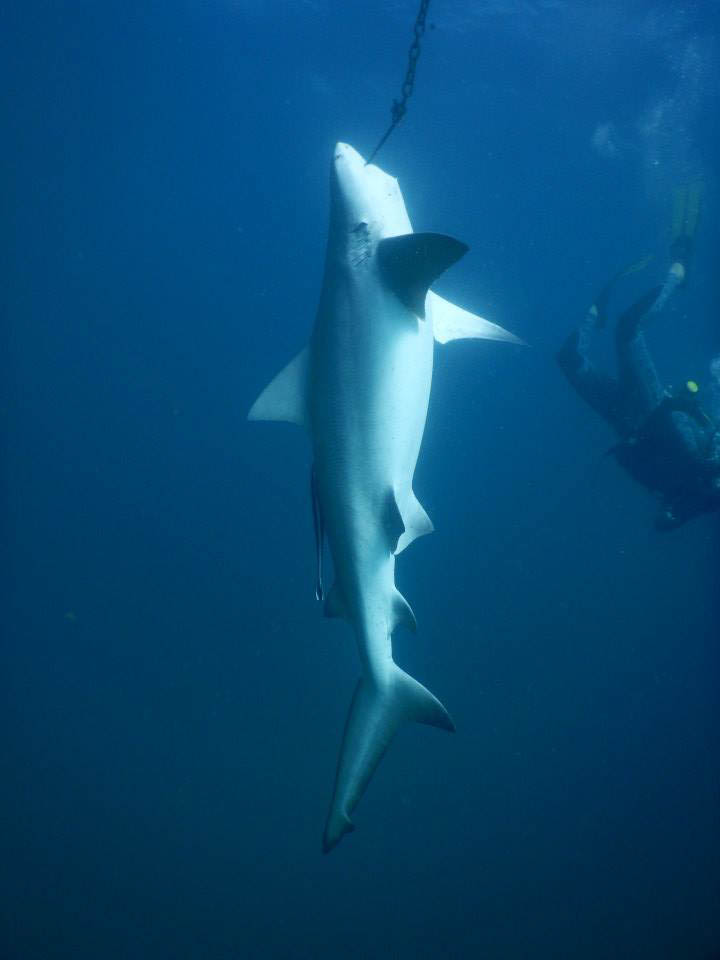Jaws has ingrained the image of a sharks many rows of teeth, gnashing and slashing through flesh, but while the film was a box office hit, the repercussions on the natural world were horrific. Prior to JAWS there was hardly any accessible documentation or films on sharks, so naturally many people believed that the giant grey and white fish was truly a man-eater. The gruesome deaths on screen have pegged sharks as notoriously bloodthirsty enemies to humans, while in reality, the label is more appropriate for humans. The view however, was not restricted to Great White Sharks, which is the species JAWS is, but extended to many others in the shark family. On the east coast of Australia, the Grey Nurse Shark fell prey to these interpretations and suffered innumerably because of them.
Grey Nurse Sharks also known as Sand Tiger Shark or Ragged Tooth Shark, spend much of their time in easily accessible waters. Off Brisbane, they enjoy cruising around Shark Alley on Flat Rock, further down south near Byron Bay they congregate at Julian’s Rocks while even further south there is the famous Fish Rock Cave. Fish Rock cave is a nursery for Grey Nurse Sharks meaning many juvenile’s grow up in the surrounding waters. Grey Nurse Sharks grow to be 3.2m, and feed on a diet of pelagic fish. With their biggest meal measuring 30cm, humans are never on their menu. While their sharp spikey teeth give them a ferocious look, they are quite placid and mind their own business if divers approach them.
Due to the predisposition of these sharks, they became an easy target for the many spear fishermen who vowed to eliminate the man eaters. In the 1960 and 1970’s majority of the healthy population were wiped out, with a mere few hundred individuals remaining on the entirety of the east coast. Few hundred sharks down from a thriving, and harmless population all because of a movie. No one intervened until 1990, when the Grey Nurse Shark was listed as an critically endangered species and protective measures began.
Since then, the population has been climbing slowly but steadily, with incredible projects such as Grey Nurse Shark Watch spear heading the conservation efforts. Now if you dive in any of the dive sites mentioned above, you too can participate in the fight for these sharks. Citizen Science describes the practice of having civilians aid in scientific research majority through collecting data. Grey Nurse Sharks have distinctive spots on their sides, which remain unchanged throughout the duration of their life. Photographs of these spots can help identify individuals and track their progress through the years. Currently, around 1000-1500 individuals have been identified and kept track of on their data base.
In addition to visually identifying the sharks through their spots, some are tagged with the data being transmitted to laboratories at the University of Queensland and Griffith. Unfortunately, shark’s bodies are extremely sensitive to foreign objects meaning quite often the punctures from the tags get infected and fall out.
Many Australians still enjoy fishing for sharks, for sport, however the grisly torn up faces the hooks create in the sharks are anything but sportive. Sharks have been spotted with 10cm hooks and a trailing line hindering their movement and hunting. Unfortunately, many of these sharks disappear from the scientists’ radar suggesting that the infections and inability to hunt beat the fantastic creatures. The scarred and mangled jaws a mild reminder of the prosecution and gear these animals face.
Each year millions of sharks are killed by drift nets, by-catch, “beach protective shark meshing”, commercial and recreational fishing. The main risk for these sharks is from by catch of indirect methods of line fishing targeting Wobbegong sharks. Which are later sold at fish and chips chops as “Flake”. The Grey Nurse Sharks are especially vulnerable due to their late maturation and low breeding success. They only give birth to 1 or 2 young every second year after reaching sexual maturity at around 7 years of age. Their distribution in specific habitats makes it difficult for them to migrate to other areas.
For the many people who are scuba divers, sharks however mean something else than a sport or a fear, they mean a fantastic new diving companion. Flat Rock, Julian’s Rocks and Fish Rock Cave are all extremely popular dive spots, luring shark lovers from all over the world to dive with the gentle giants. The sharks prefer cooler waters, so heavily wet suited divers hop into 19 degree water to cruise along with them. Their love for the animals and financial contributions to the popular dive spots helps in continuing to ensure the Grey Nurse Sharks remain protected, even if their STATUS is now vulnerable. Divers do still need to take care when diving with the sharks, not due to danger from the apex predators, but in contrast their own behavior. For some reason, humans have an incessant need to touch and chase anything they can get their hands on. The sharks often cruise within an arm’s length of divers and it is all the instructors and Divemasters can do to ensure people don’t reach out to pat the shark. Patting sharks is bad. Their skin possesses a thin layer of protective film on it, just like manta rays, that if touched gets rubbed off. This leaves them exposed to illnesses and infections. It’s also in the best interest for scuba divers to get into the habit of not touching anything. Especially in Australia, it is just a short amount of time until they touch something that could severely hurt them.
Grey Nurse Sharks are not the sharks to fear, neither are their bigger cousins the Great White Sharks. Sharks have lived in the oceans as apex predators for millions of years, and will hopefully survive the apocalypse which is humans.
In a modern hysteria to rival the one of the 70’s the Australian government has taken it upon itself to put in place shark culling programs. In 2014 over 667 sharks were killed through both drop lines, which are two buoys with a giant hook with some bait on it, and shark nets which hang like little flags off the coast of Australia. Just like a little flag would not stop a bird, the shark nets do not prevent sharks from entering beach areas. Instead the nets capture over 100 turtles, whales, and rays. That is just the official number published. Nets in New South Whales over the past 60 years have killed 577 Great White Sharks, 352 Tiger Sharks and over 15,134 other Marine animals.
Reports estimate that humans kill 100 million sharks every year. The scientists behind the report, published in the journal Marine Policy, added that the number of sharks killed could be anywhere between 63 and 273 million, staggering figures that experts say could drive many shark species extinction.
Meanwhile, do you know the amount of deaths due to sharks per year?
Six.
Six people die, when swimming or surfing in an apex predators home. This number is less than the amount of people killed by cows (20), by falling coconuts (150), champagne corks (24), bees (100) yet the fear from JAWS is still driving decisions to be made by creatures who are now vulnerable to extinction. Peter Benchley, the author of the bestselling novel and blockbuster movie, has now spent years protecting sharks from the stigma his masterpiece unleashed. A report released in 2009 by International Union for Conservation of Nature states that more than 30% of the 64 species of sharks and rays are threatened or endangered.
It is up to us to stand up together and say no to shark fishing for sport, to banning nets and bait hooks since they are ineffective shark attack prevention techniques. We need to vote with our wallets and stop buying flake or any fish, as sharks are often caught up as by-catch. Spread love and understanding about these beautiful sharks. Without the apex predators, our oceans will suffer.
Thank you for the beautiful photos from Harrison Townsend and Jenni Calcraft.









